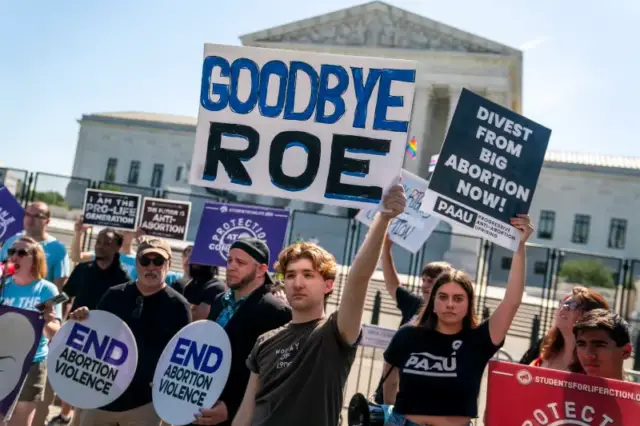On June 24th, abortion was declared unconstitutional in the US with the Dobbs vs. Jackson Women’s Health Organization. At least 62 million abortions have been performed in the United States since 1973, when the Supreme Court itself decided to legalize abortion until “fetal viability” (about 24 weeks) in Roe v. Wade, according to data from the federal government itself.
However, on June 24th, 2022, the decision was revoked, declaring abortion unconstitutional and establishing the case of Dobbs vs. Jackson Women’s Health Organization. Where it was facing Mississippi authorities with a reproductive health clinic in the capital on account of a 2018 state law, which prohibits most interruptions after the first 15 weeks of pregnancy. That case had a six-to-three decision, dissatisfying 61% of Americans who believe that abortion should be legal, according to the Pew Research Center study.
From a purely legal point of view, the ruling is fully reasoned because abortion has no reference in the US constitution (especially in the 14th amendment: the clause on due process, on equal protection and that guarantees the rights that are not explicitly mentioned in the supralegal norm, but that are linked to history, tradition or the concept of freedom) as was made to believe in Roe vs. Wade.
Nor can it be taken in an implicit way, as explained by the Supreme Court judge, Samuel Alito, when he establishes that:this “right” is not within the category of the concept of freedom or that is rooted in American history and tradition.
Not within its “traditions”
As this argument is one of the main reasons why the Roe vs. Wade, prior to this, the fact that most states had restrictions for a century is a strong indication that the “right” to an abortion is not within its traditions and in the conscience of the American people to be considered as fundamental (voluntary abortion having been declared in this way).

In 30 of the 50 States that make up the country, abortion was completely illegal before the decision, being established in this way by resolutions of the corresponding Legislative Chambers (the representatives of the people). Therefore, the decision was always contrary to what was established by the supreme norm itself because the majority of the American people had already established as historical and traditional the non-interruption of pregnancy.
Also, in this line of history, it should be noted that the Court had to find within the scope of the Fourteenth Amendment a right that was unknown to the drafters of the amendment. As early as 1821, the Connecticut Legislature enacted the first state law to address the issue of abortion. At the time of its adoption in 1868, there were 36 laws enacted by state legislatures limiting abortion, many of which were still in effect before Roe v Wade (such as the Texas law that was struck down and left unchanged).
The Fourteenth Amendment
Thus, the only possible conclusion is that the framers did not intend the Fourteenth Amendment to take away from the States the power to legislate on this matter and now with this new precedent of Dobbs vs. Jackson Women’s Health Organization the issue is addressed again by what was intended from the beginning: that the issue be a decision that is in the hands of the people (through its Legislative Chambers), abiding by what the editors had in mind of the amendment and therefore the Constitution.
The same Court has tacitly admitted the error committed in Roe v. Wade in the judgment of Casey v. Planned Parenthood when it abandons its main arguments; and it is that in this sentence they stopped seeing the interruption of pregnancy as a fundamental right and basing it on privacy, using more the term freedom.
Furthermore, in Casey, the Court for the first time indicates that the unborn child can be called a living child throughout the pregnancy: “Even in the earliest stages of pregnancy, the State may…encourage the mother who knows that there are philosophical and of great weight…in favor of the continuation of the pregnancy…and that its decision contemplates the consequences of an abortion for the fetus”.
Certainly Dobbs vs. Jackson Women’s Health Organization comes to make the beginning and not the end of the debate because now it is up to the Legislative Chambers to decide the future of the unborn, currently having a government and more than half of the Americans who openly oppose the sentencing decision.

